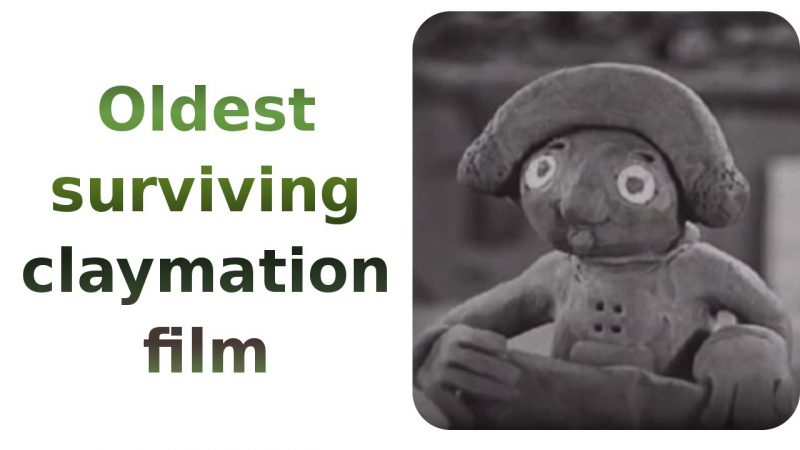Clay animation or claymation is one of many forms of stop motion animation. Each animated piece, either character or background, is “deformable”—made of a malleable substance, usually Plasticine clay.
Clay-animated films were produced in the United States as early as 1908, when Edison Manufacturing released a trick film entitled The Sculptor’s Welsh Rarebit Dream. In 1916, clay animation became something of a fad, as an East Coast artist named Helena Smith Dayton and a West Coast animator named Willie Hopkins produced clay-animated films on a wide range of subjects. Hopkins in particular was quite prolific, producing over fifty clay-animated segments for the weekly Universal Screen Magazine. By the 1920s, cartoon animation using either cels or the slash system was firmly established as the dominant mode of animation production. Increasingly, three-dimensional forms such as clay were driven into relative obscurity as the cel method became the preferred method for the studio cartoon.
Nevertheless, in 1921, clay animation appeared in a film called “Modeling”, an Out of the Inkwell film from the newly formed Fleischer Brothers studio. “Modeling” is one of the few known shorts using clay that was released during the 1920s. “Modeling” included animated clay in eight shots, a novel integration of the technique into an existing cartoon series and one of the rare uses of clay animation in a theatrical short from the 1920s.
This film that we found on Yestervid is called ‘Long Live The Bull’ is from 1926 and was animated by Joseph Sunn.

Source :Yestervid
Pioneering the clay-painting technique was one-time Vinton animator Joan Gratz, first in her Oscar-nominated film The Creation (1980), and then in her Oscar-winning Mona Lisa Descending a Staircase, filmed in 1992.
In 1972, at Marc Chinoy’s Cineplast Films Studio in Munich, Germany, André Roche created a set of clay-animated German-language-instruction films (for non-German-speaking children) called Kli-Kla-Klawitter for the Second German TV-Channel; and another one for a traffic education series, Herr Daniel paßt auf (“Mr. Daniel Pays Attention”).
A variation of clay animation was developed by another Vinton animator, Craig Bartlett, for his series of Arnold short films (also made in the late-1980s/early-1990s), in which he not only used clay painting but sometimes built up clay images that rose off the plane of the flat support platform toward the camera lens to give a more 3-D stop-motion look to his films.
Want to become a trivia master? Sign up for our Today In History newsletter!
Some of the best-known clay-animated works include the Gumby series of television show segments (created by Art Clokey), The California Raisins advertising campaign by Will Vinton Productions studio and The WB’s The PJs, produced by and featuring the voice of Eddie Murphy. Clay animation has also been used in Academy Award-winning short films such as “Closed Mondays” (Will Vinton and Bob Gardiner, 1974), “The Sand Castle” (1977), Creature Comforts (Aardman, 1989), and all four Wallace & Gromit short films, created byNick Park of Aardman Animations. Aardman also created The Presentators, a series of one-minute clay-animation/CGI short films aired onNickelodeon UK. Some clay animations appear online, on such sites as Newgrounds. In addition, many of the Rankin-Bass holiday specials were clay-animated.
